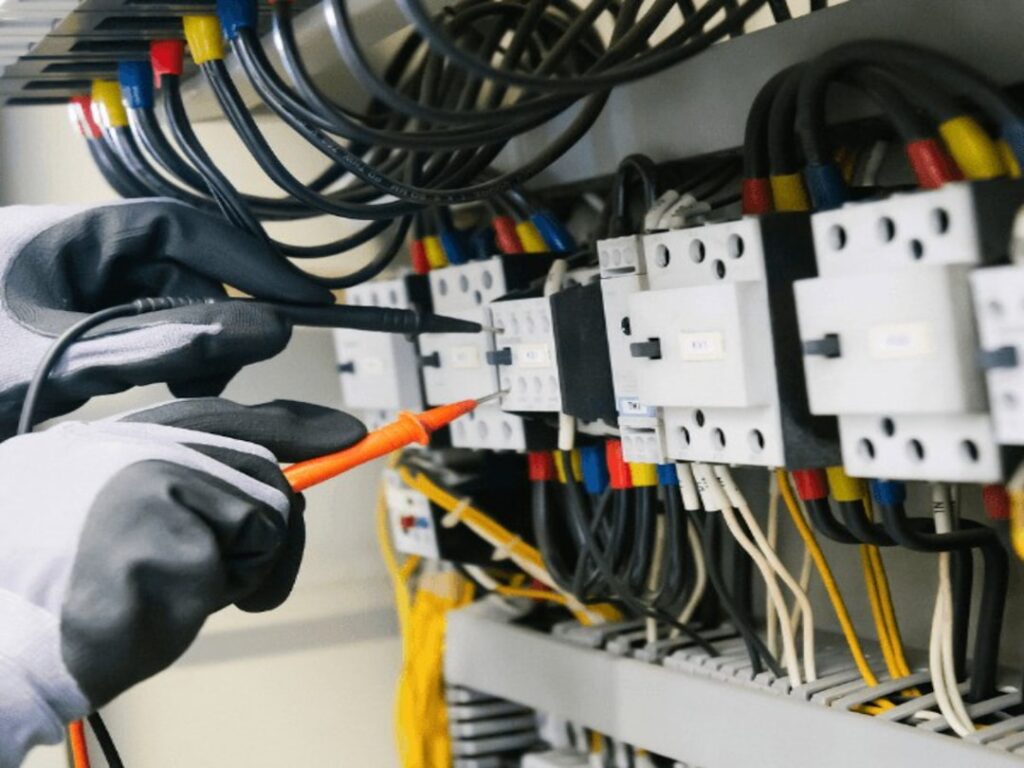Discover the top 10 AI-powered maintenance solutions that are revolutionizing the future of maintenance by addressing common challenges effectively.
Introduction
In today’s fast-paced industrial landscape, maintaining smooth operations is paramount. Traditional maintenance methods often struggle with unplanned downtime, inefficient scheduling, and a growing skills gap. Enter AI-powered maintenance solutions—innovative tools that transform maintenance management by leveraging artificial intelligence to predict failures, optimize schedules, and enhance operational efficiency. This blog explores the top 10 AI-powered maintenance solutions shaping the future of maintenance.
1. Predictive Maintenance
Problem: Unplanned equipment breakdowns can halt production, leading to significant financial losses.
Solution: Predictive maintenance uses AI algorithms to analyze sensor data, historical records, and operational metrics to forecast potential failures. This allows maintenance teams to perform repairs proactively, minimizing downtime and extending equipment lifespan.
Example: Siemens employs AI to predict equipment failures, enabling timely interventions that prevent costly production stoppages.
2. Smart Preventive Maintenance Scheduling
Problem: Inefficient scheduling of preventive maintenance tasks can disrupt operations and waste resources.
Solution: AI-driven scheduling tools analyze equipment usage patterns, maintenance history, and resource availability to create optimized maintenance schedules. This ensures maintenance tasks are performed at the most effective times, enhancing labor efficiency and reducing disruptions.
Example: iMaintain’s smart PM scheduling dynamically adjusts maintenance tasks based on real-time data, ensuring optimal resource allocation.
3. Real-Time Data Analytics
Problem: Lack of real-time visibility into asset performance hinders effective decision-making.
Solution: AI-powered real-time data analytics provide live insights into the health of equipment, enabling immediate responses to emerging issues. Dashboards display key metrics such as temperature, vibration, and fuel consumption, allowing managers to monitor and manage assets proactively.
Example: Construction asset manager David uses AI dashboards to track machinery health in real-time, preventing unexpected breakdowns and maintaining project schedules.
4. Asset Health Monitoring for Aging Equipment
Problem: Monitoring the health of aging assets is challenging, often leading to unnoticed potential failures.
Solution: AI-based asset health monitoring systems track the condition of aging equipment, providing early warnings of possible failures. This helps prioritize maintenance efforts and decide when to replace or retire assets, ensuring reliability without excessive costs.
Example: Local county maintenance director Linda utilizes AI to monitor aging infrastructure, extending asset lifespan and maintaining operational reliability.
5. Smart Inventory Management
Problem: Managing spare parts inventory can lead to frequent stockouts or overstocking, disrupting maintenance workflows.
Solution: AI systems analyze historical usage data, demand forecasts, and usage patterns to optimize inventory levels. This ensures the right parts are available when needed, reducing downtime and avoiding unnecessary inventory costs.
Example: Parts manager Chris benefits from AI-driven inventory management, ensuring critical components are always in stock and maintenance teams remain productive.
6. AI-Powered Training and Support
Problem: Finding, training, and retaining skilled technicians is increasingly difficult, exacerbating maintenance challenges.
Solution: AI-powered training platforms offer on-demand access to training materials and troubleshooting guides. Virtual assistants and chatbots provide real-time support, enabling technicians to perform complex tasks efficiently and bridging skill gaps within the workforce.
Example: Industrial facility team lead Alex leverages AI training tools to upskill technicians, ensuring a competent and reliable maintenance team.
7. Automated Compliance Reporting
Problem: Keeping up with constantly changing regulations and managing extensive paperwork is time-consuming and error-prone.
Solution: AI platforms automate the creation of compliance reports and track regulatory changes. By pulling data from maintenance logs and sensors, these systems generate accurate reports quickly, reducing manual effort and ensuring regulatory adherence.
Example: Compliance expert Jennifer uses AI to streamline reporting processes, maintaining regulatory compliance effortlessly.
8. AI-Driven Cost Savings
Problem: Balancing maintenance budgets while ensuring operational efficiency is a persistent challenge.
Solution: AI identifies cost-saving opportunities by optimizing resource allocation and minimizing unnecessary maintenance tasks. It tracks maintenance costs relative to asset lifespans, aiding in smarter repair or replacement decisions.
Example: CFO Michael implements AI cost-saving strategies, reducing maintenance expenses without compromising equipment reliability.
9. Enhanced Communication and Collaboration
Problem: Information silos and scattered communications hinder effective maintenance coordination across teams.
Solution: AI-powered platforms centralize communication, facilitating real-time task assignments, document sharing, and collaboration. This ensures all teams are aligned and can coordinate maintenance activities seamlessly.
Example: Project coordinator Emily utilizes AI communication hubs to keep maintenance teams informed and projects on track.
10. Transition to Proactive Maintenance
Problem: Reactive maintenance approaches lead to frequent emergencies and increased costs.
Solution: AI enables a shift to proactive maintenance by predicting failures before they occur. By analyzing data trends, AI allows technicians to address issues proactively, reducing downtime and maintenance costs.
Example: Technician Robert adopts AI-driven predictive maintenance, moving from a reactive to a proactive maintenance strategy, enhancing operational efficiency.
Real-World Applications Across Industries
Manufacturing
AI predictive maintenance helps manufacturers like Siemens optimize schedules and prevent equipment failures, ensuring uninterrupted production.
Energy Sector
Companies like GE use AI to monitor turbines and power generation equipment, preventing outages and ensuring reliable energy supply.
Healthcare
Hospitals implement AI to maintain critical medical equipment, ensuring devices like MRI machines and ventilators operate smoothly, enhancing patient care.
Smart Buildings
AI systems manage HVAC and electrical systems in buildings, optimizing energy use and maintaining comfortable environments. For instance, BrainBox AI’s technology reduces electricity consumption in shopping centers significantly.
Leveraging AI in Maintenance Management
Implementing AI in maintenance management requires a strategic approach. Begin by identifying key maintenance challenges and ensuring data quality. Partnering with experienced AI providers and starting with pilot projects can demonstrate AI’s value tailored to your specific needs.
AI-enabled CMMS solutions like iMaintain offer comprehensive features including real-time asset tracking, predictive maintenance, and workflow automation. These tools empower organizations to transition from reactive to proactive maintenance strategies, enhancing efficiency and reducing costs.
Conclusion
AI-powered maintenance solutions are revolutionizing the maintenance management landscape. By addressing common challenges such as unplanned downtime, inefficient scheduling, and skill gaps, these innovations enable organizations to achieve operational excellence. Embracing AI-driven maintenance strategies is essential for staying competitive in the evolving industrial landscape.
Ready to Transform Your Maintenance Management?
Empower your maintenance teams with cutting-edge AI solutions. Visit iMaintain UK to discover how our automated maintenance solutions can elevate your operations to the next level.






